Looking for a game with a distinct visual appeal? Want something that plays quicker than 40K and has a tighter ruleset? Want a game where everything is in plastic for easy building and conversion? Want a system where your redneck golem can get a demonic baby drunk? Maybe you should try Malifaux, Wyrd’s Victorian steampunk horror skirmish game.
“It’s not you, baby, it’s me” you say to your current game. “I just need some space, spend some time trying out other systems. I think it would be good for our relationship.” So off you go, looking for another game to play. And certainly there’s no lack of them these days- Warmahordes, X-Wing, Infinity, Kings of War, Dropzone/fleet, and oh so many more. So why should you give a damn about Malifaux? Well, I’m here to tell you.
If you follow the wargames scene at all, you’ve certainly heard of it- Malifaux is Wyrd Games’ entry into the skirmish gaming market. Set in an alternate earth at the turn of the previous century, it mixes the kooky, off-beat energy of steampunk with the horror-inspired creepiness of the literature of the era. The game takes place in a ruined city on the other side of a magical portal to the eponymous dimension, the only place where so-called “soulstones” can be found- and soulstones are the key to magical power. Naturally, all of the powers that be rush to exploit this resources, and in doing so a bleak boom town is created where anything goes and factions of all sorts vie for power.
That’s all well and good, but what is it that makes Malifaux stand out from the crowd? Well, there’s a number of things. First of all, it doesn’t use dice- instead, randomization in Malifaux uses a deck of cards to generate totals, which not only lends the game a bit of a classic-gaming flair, it also means that there’s some neat tricks that you can pull and a certain assurance about how your luck goes. (After all, there are only so many 2s in the deck.)
Second, the price point. With the core rulebook clocking in at $15 for the basic version (or $40 if you want the expanded one with all of the fluff and the stats for the basic models in each faction) plus $45 for a starter box, it’s about as cheap as any game can possibly be. And these aren’t GW-style janky-worthless-garbage starter boxes, either; each starter not only contains a Master (necessary to lead your crew) and a good selection of themed minions to support them, but also rules cards containing all the information you need to use those models and any relevant upgrade cards. This pattern is repeated across all of their boxes- every model comes with its own rules and is wholly self-contained. There are expansion rulebooks available for those that want a more complete listing of things (as well as rules for campaigns, etc), but these really are optional- you can play the whole game and even go to tournaments without ever cracking one open.
Third, the mission structure. In most wargames you build your army, roll up some kind of mission with your opponent, and then go to town on each other; every force needs to be designed to handle every mission, because you never know what you’ll get. In Malifaux, you don’t have to go into things blind- you roll up a mission first, and only then do you write up a crew- this is true even at tournaments. Did you draw a mission where you need to kill the other guy? Take some really killy models! Gotta hold objectives? Take some tough guys! Of course, it’s more complicated than that, because you only know the potential missions that you and your opponent have access to when building a crew- which missions each of you picked can be kept secret. Oh, you and your opponent aren’t necessarily playing the same mission- did I forget to mention that? You might be trying to blow up that supply wagon, but the other guy might be out to assassinate your leader or infiltrate your territory while you’re at it, so you’ve always got to be on your toes.
Fourth, simplicity. Most people here are probably Warhammer 40K players, and especially in 7th Edition you need stacks and stacks of rulebooks to play the game. You’ll need your BRB and your codex, of course- call that an easy 250 pages of rules. Then you add in your supplements, your Forge World, the downloadable dataslate, the allied codex you brought in, the formation from a White Dwarf you’re using, etcetera, etcetera, etcetera. Malifaux, to contrast, is ninety pages for the core rules and every model’s abilities fit on a single standard playing card (plus or minus an upgrade or two, of course.) No need to page through half a dozen books looking for some obscure USR’s wording- everything you need to know is right in front of you. Because of all of this, the game plays much more quickly that 40K does- thirty to sixty minutes is a pretty standard time frame, depending on the size of the battle.
Fifth, company support. Wyrd games actually wants you to play Malifaux at tournaments; they want you to play Malifaux in leagues; they want you to post to the forums about it and bring up rules issues (did I mention they actually have their own forums and fan site resource list? because they do); they want you to tell them about rules imbalances and mistakes and inclarities. They want you to have fun with their game and they will do work to make sure you do. They have several systems in place for organized tournament play and other types of play and they update them year-by-year to try and fix problems that are noted.
None of this seems like it should be extraordinary, but sadly enough it is. Now, Wyrd isn’t the only company that is doing good work right now- far from it- but they’re certainly a notable example of such. And if you like the look and feel of their game, I highly recommend you give it a try- there’s even a relatively-cheap starter set (only US$65!) that has a complete set of rules and two small crews that can be played against each other- or used in full-size battles if you decide you like the game.
Who’s Who of the World Beyond the Breach
So you’re digging all of this. You really like the sound of things and you want to get into the game, but you’re not sure where to start- that’s perfectly understandable. Diving headfirst into a hobby can be daunting, but fortunately there are some really good resources available for you to learn about the game. The simplest one is Wyrd’s own site, which has a very good guide to the basic backstory of the game as well as the different factions. You might turn up your nose and sniff at using a company-provided resource, but the truth is that Wyrd actually provides a very good guide to the fundamentals of what each of the Masters does and how they play- and exploring the site a bit further will gets you details on the abundance of box sets they have. Going beyond generalizations, however, you’ll want some actual rules- and here the semi-official wiki, pullmyfinger.wikispaces.com is an excellent jumping-off point, with a guides on most of the models in the game as well as lessons for beginners on the missions, general tactics, starting a crew, and much more.
But let’s say you don’t want to read through all of that quite yet. You want a basic idea of what the game is giving you before you start doing too much homework. Well, I’m happy to oblige.
The Guild are the nominal good guys of the Malifaux universe; as with 40K, most everything in Malifaux is shades of grey and hints of Very Bad Stuff being done, but in a world overrun by monsters, wild magic users, outlaws, thieves, zombies, conspiracies, and worse yet, the Guild are the ones trying to keep it all under control. They are often the most straight-forward of the factions, with models that shoot hard, punch hard, or otherwise exist mostly to put the hurt on the other guy- but that’s not to say they aren’t without their tricks. They have lots of powerful models (albeit often with a price tag to match) and many of their special abilities are keyed around shutting down certain types of enemy- no one has hard counters to the enemy like the Guild. They are also the premiere shooting faction in the game by most measures, though certainly not the only one- one of the beauties of Malifaux is that, with the right Master and crew, most factions can push a wide variety of playstyles.
If the Guild are the watchmen, then the Neverborn are the things that go bump in the night. Though they sometimes may appear human, in truth the Neverborn are monsters- primeval things that predate humanity’s incursions into the world of Malifaux and its broken city. As benefiting their status as horrors of the dark, they have a variety of non-standard methods of attack and defense; some of them are so outright horrifying that normal people will quail at the sight of them and give up, whereas others can hide in plain sight, wreaking their devastation on an opponent who doesn’t even know they are there. Being the polar opposite of the Guild, the Neverborn are very tricksy and rely a lot on their unique shenanigans to do work, but they also possess some truly devastating melee hitters that can make anyone think twice about engaging them directly.
Of course, not all bad guys are inhuman beasts, as the Ressurectionists well prove. While mostly human and mostly living themselves, they excel at raising up the dead in various forms to do their bidding- be it simple zombies, vengeful ghosts, or worse abominations. Having already mastered the powers of death, Ressurectionists are exceptionally hard to kill and are some of the toughest models in the game, but they prefer to do their own killing at short range. Many of them can summon up new models as the game progresses, overwhelming the enemy in a tide of rotting flesh, and they also have a strong theme of debilitating effects (such as poison) that can leave enemy models reeling.
The Arcanists are what’s caught in the middle of everyone else’s power struggles- the railway workers, the miners, the unions and merchantmen that populate the town. Of course, they are not wholly innocent themselves, having a wide variety of goals and agendas, but for the most part they are composed of the common folk trying to get by. “Getting by” in the world of Malifaux might mean joining up with a cyborg supergenius or a bizarre elemental cult, but such is life. Arcanist masters are almost universally hard-hitting spellcasters and the faction as a whole tends to be powerful-but-fragile. However, if you want to rain electric (or frosty, or icy) death on your enemy from a distance you can’t ask for better than the Arcanists, and their wide variety of accompanying weirdos gives the faction a lot of flexibility.
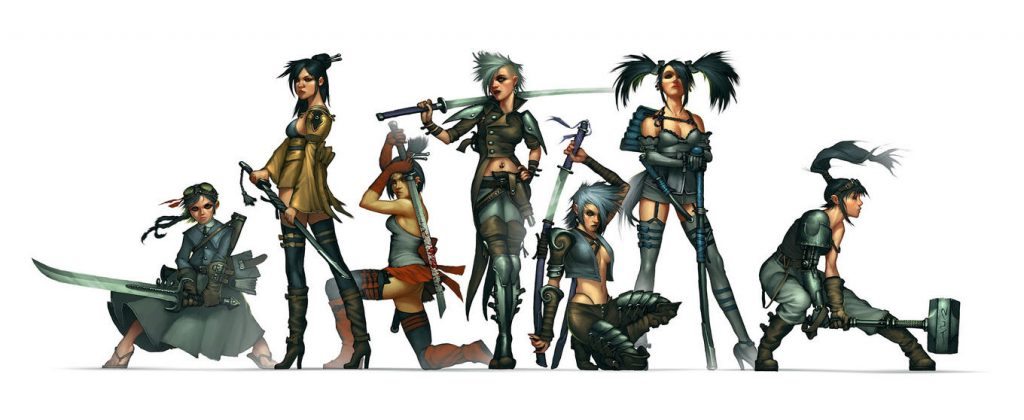 The Outcasts are… well, if the Arcanists are weirdos, the Outcasts are the people that not even the weirdos got along with. By their very definition lacking any single defining trait, Outcasts are something of a grab-bag faction; they include amongst their roster dead nihilists, sword-swinging and gun-toting mercenaries, avatars and assassins, the Pied Piper himself and even undead tree-hung spirits of justice. Many outcasts have the Mercenary trait, meaning they can be hired by other factions for a slight premium, but they also play well within their own faction and can often “steal” a select few models from other crews.
The Outcasts are… well, if the Arcanists are weirdos, the Outcasts are the people that not even the weirdos got along with. By their very definition lacking any single defining trait, Outcasts are something of a grab-bag faction; they include amongst their roster dead nihilists, sword-swinging and gun-toting mercenaries, avatars and assassins, the Pied Piper himself and even undead tree-hung spirits of justice. Many outcasts have the Mercenary trait, meaning they can be hired by other factions for a slight premium, but they also play well within their own faction and can often “steal” a select few models from other crews.
Gremlins are the comic relief of the setting, very much akin to 40K’s Orks. Being essentially D&D-style goblins in nature (dumb, violent, squabbling) and redneck yokels in portrayal, Gremlins are most dangerous in large numbers (which they excel at producing) and have a distinct “quality over quantity” theme. Gremlins also have an affinity for pigs- they fight alongside them and they sometimes eat them, both of which the pigs reciprocate in turn. Whether it’s launching piglets across the battlefield with a Pigapult or blind-firing weapons to both their and the enemy’s detriment, you can be assured that whatever happens with a Gremlin crew it will be patently absurd.
The Ten Thunders are the most recent addition to the game, though some will say that they were there all along. Virtually all of their Masters are dual-faction, meaning they can potentially hire models either from their own faction or one of the others- this gives them an unprecedented amount of flexibility in writing crews, even without the possibility of changing Masters. The Ten Thunders have been working behind the scenes for many years, patiently infiltrating Malifaux without the other major players noticing their presence and have been setting themselves up for something- though exactly what it is they’re after remains the subject of speculation. As they have such a wide variety of models available to them, the Ten Thunders are nearly as varied in style as the Outcasts are, but many of them play off of manipulating conditions, upgrades, or position in unusual ways.
But What About the Shinies?
So that’s great. It sounds like a cool game and a lot of fun and the rules are pretty good I guess and everything is spiffy-keen, but this is miniature wargaming after all. How are the models?
Quite good, I’m happy to say. Wyrd has moved over to an all-plastic line with the second edition of the game (though you can still find the old metal models around, if you’re a masochist.) The sculpts are excellent and have lots of fine details that really pop well thanks to the material; though they are nominally mono-pose (since each one represents a unique individual, even models that come two or three in a box) the fact that they are plastic makes conversion a breeze- and better yet, Wyrd sells a “generic” multikit that comes with lots of stuff for customizing or converting models if you want to do something special.
Designed at 32mm “realistic” scale, the minis are typically a little bit taller than GW’s fare but also look more like actual human beings; their hands and heads are closer to scale, their weapons aren’t comically oversized, etc. Also unlike GW, Wyrd actually features lots of female characters in their lineup in both the roles of master and of minion in the game; the factions tend to be fairly well-balanced in terms of gender overall, though unfortunately quite a few of the female minis fall into the “obvious cheesecake” role (though thankfully not all of them.)
Another nice inclusion is Wyrd’s dedication to the support elements of the hobby, including third-party items. Wyrd themselves have an extensive array of bases, conversion items, alternate sculpts, and other goodies available for the core game- if you want fancy sewer bases or thematic Victorian street lamps, you need look no further than their store. However, since they realize that they can’t possibly produce everything themselves, they also have several partners creating semi-official terrain and other supplemental items for the game linked right off of their site as well as in the fan resources.
Conclusion
If you’re looking for a low-entry game that’s a lot of fun to play and has a fast-growing minis line (typically 3-6 models are released every month and consistently have been for more than a year now), Malifaux is a great choice for a game. The designers obviously have a lot of love for the game and it’s expanded rapidly in the past few years, picking up a cutesy side game (Puppet Wars) and a more-serious roleplaying game (Through the Breach) to stand alongside it. It plays in a fraction of the time that 40K does and has a much more “personal” feel than some of the other miniatures games out there- if you’re up for something new, put off buying that one unit box for your Warhammer army and maybe give it a shot; you might be pleasantly surprised.

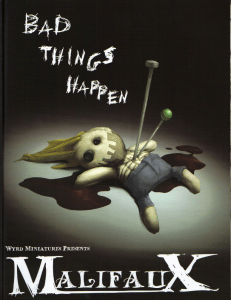

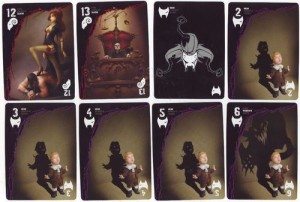
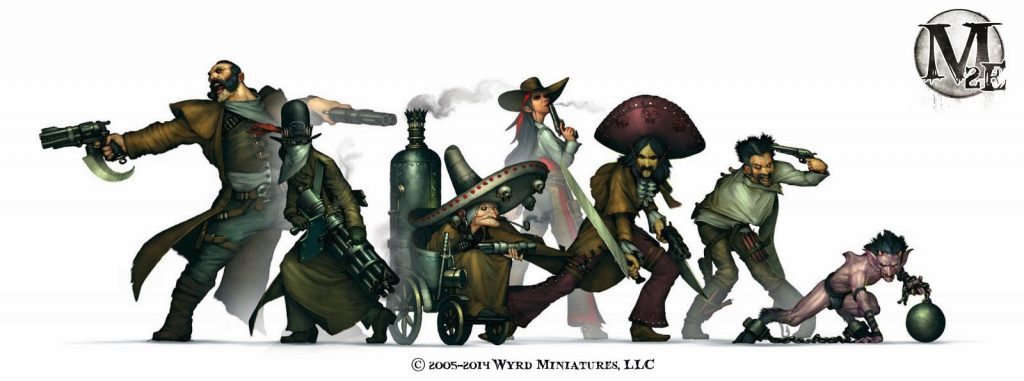

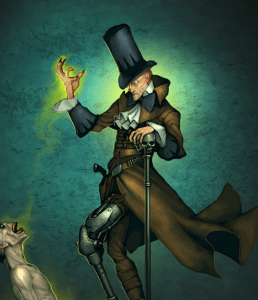
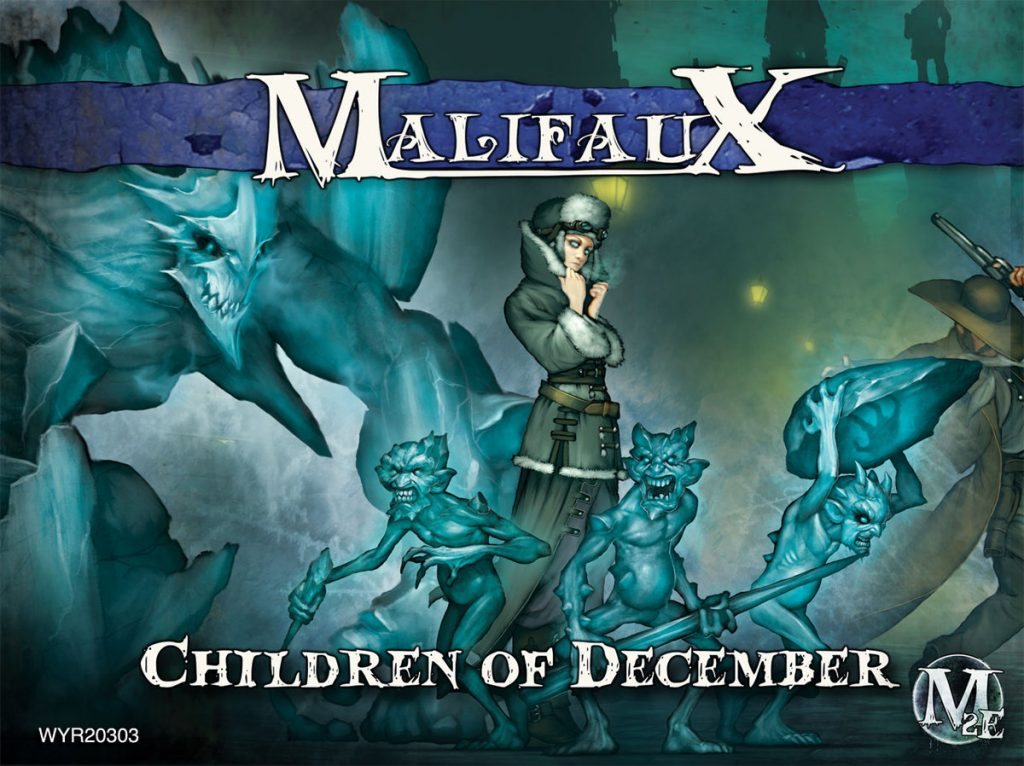
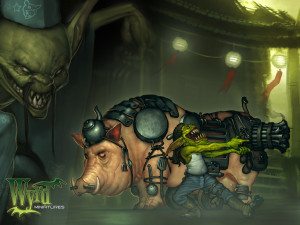

I got into this in first edition and moved away from it due to life. I’m definitely going to need to check it out again sometime soon.
I’m super pumped that they made my main man, Von Schill a true Master.
Maybe we could play when you’re up for that tournament on the 5th?
Damn dude, this is a really, really well written introduction to Malifaux! Especially from a 40k player.
I’ve played a demo game of this and I,can a test that the card flipping mechanic is pure awesomeness!
The models can be a bit advanced to assemble though.
I didn’t have any problems with them- they mostly seemed pretty simple, but I admit I have a lot of modeling experience so that may just be my personal bias in action there. But being in plastic makes them relatively forgiving in that respect, and they have detailed instructions available on the website for anyone having trouble (and all of the boxes have a little “go here if you’re struggling” card included in them.)
I love the miniatures and setting on Malifaux – but really like rolling dice… guess I should demo a game to see how it feels. Nice write up!
Malifaux is magic from a gamer’s point of view as well, with an extraordinarily tight mission and ruleset wrapped around extremely well-balanced models and a responsive, accessible company and rules dev team.
Plus, Wyrd supports their customers much more directly than certain companies, including sponsoring an annual open-attend National Championship and numerous other competitive and narrative style activities.
The community, including the traveling community, is rapidly growing as well, including recent big influxes from WFB, 40K, and other games.
This is definitely the best skirmish level game on the market right now – it definitely scratches my tactical itch over Warmachine (mission structure better, feels more interactive).
I was a bit leery on the playing cards vs dice aspect, but I love it. I honestly play it more than 40k at the current juncture (if I don’t count playing in tournaments). But soon we’ll be getting our Henchmen set up at the shop so hopefully it’ll explode after that.
A great article!
Malifaux is my favorite game going right now. The range of missions is so wide, that each game feels fresh and different.
That is definitely the single biggest draw for me,yeah. Every game has one “main” mission and five “secondary” missions and there’s lots of hidden information and decision-making going on for both players. Asymmetric goals are good times.
Malifaux is obvious inspiration for why we did NOVA missions the way we do.
Yeah, that is a cool mechanic you all use: picking your missions. I do like that design element and I can see how you got it form Malifaux.
Two quick notes:
Wyrd has a starter set with 8 models, 2 decks, 2 tape measures, a starter rules set with a link to a downloadable full rules set. It’s a good deal.
If you’re going to Adepticon, there will be continuous demos of the game in whatever ballroom we have. Wyrd will also have a booth at the con where you should be able to buy what you want. There may be Wyrd stuff in the swag bag. So, if you’re there, check it out.
I love the overall feel, but none of the crews have really grabbed me yet. Keeping an eye on it, waiting for that release that just says “This is what I want to play”.
Also, I was just reminded of this Kickstarter for Terrain that’s largely been developed with Malifaux in mind: https://www.kickstarter.com/projects/1446285098/black-maria-designs-steampunk-western-terrain
Looks like some really cool stuff to me.